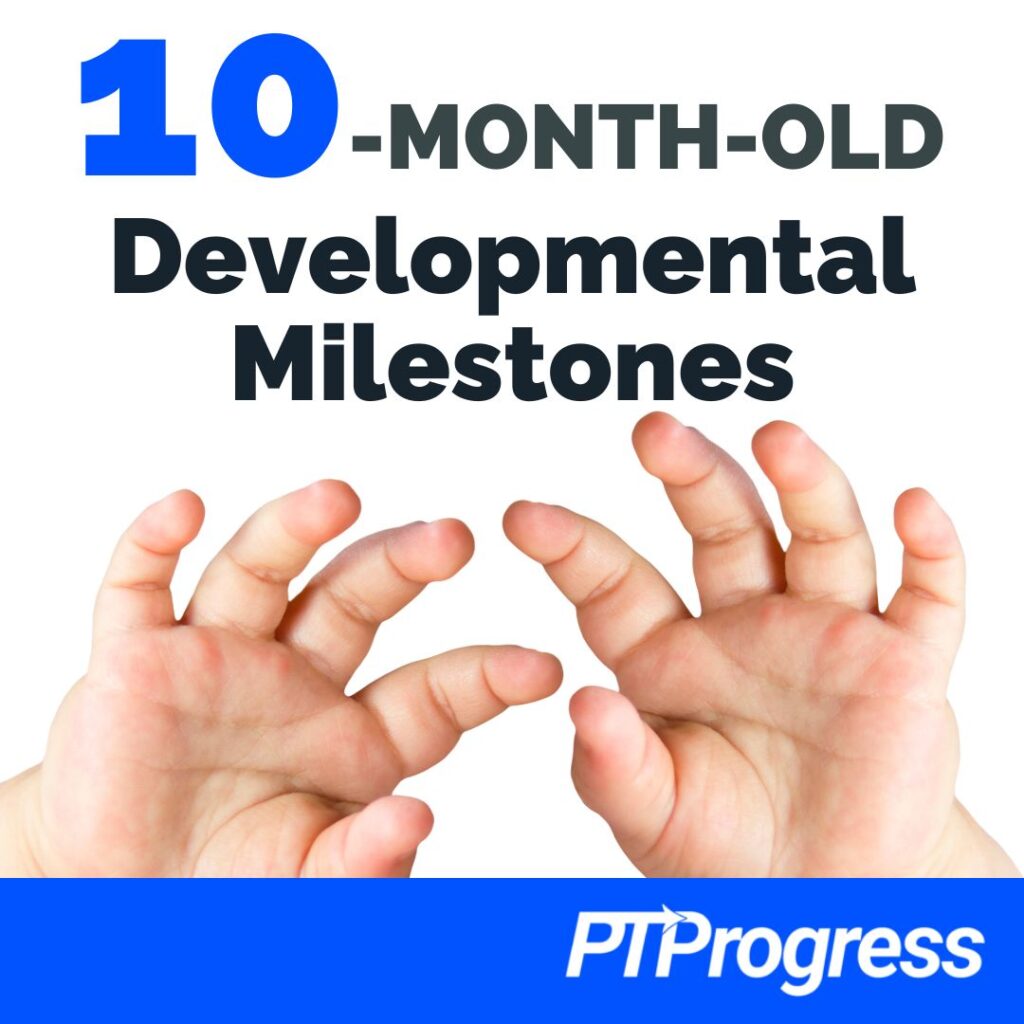
Congratulations, your baby has reached double digits—in months, that is—and they are likely hitting some exciting milestones! One of the top 10-month-old developmental milestones includes becoming more mobile and preparing to walk. Another is a tendency to get into all kinds of trouble! As your baby’s curiosity blossoms, they will want to play with everything but their toys, so be sure to put away items that you don’t want them handling. Keep reading below to learn more about the developmental milestones you can expect in a 10-month-old.
Reflexes
No new reflexes make an appearance at the 10-month mark, but the reflexes mentioned in previous reports may be relevant at this time for your child.
The following reflexes were discussed in further detail in the 5-month developmental milestones report:
- Palmar Grasp reflex
- Asymmetrical Tonic Neck Reflex (ATNR)
- Spinal Galant
- Spinal Perez
Additionally, the Symmetrical Tonic Neck Reflex (STNR) was discussed in the 6-month developmental milestones report.
These reports outline what is considered “normal” for a baby’s reflex schedule—i.e., when a reflex usually appears and disappears, or “integrates.” But normal is not always universal, and your child may be on a different developmental schedule. Any questions or concerns you have about your child’s development should be brought to the attention of your child’s pediatrician. If they feel it’s necessary, they can refer your baby to an occupational therapist trained in reflex integration.
10-Month-Old Developmental Milestones
Mobility
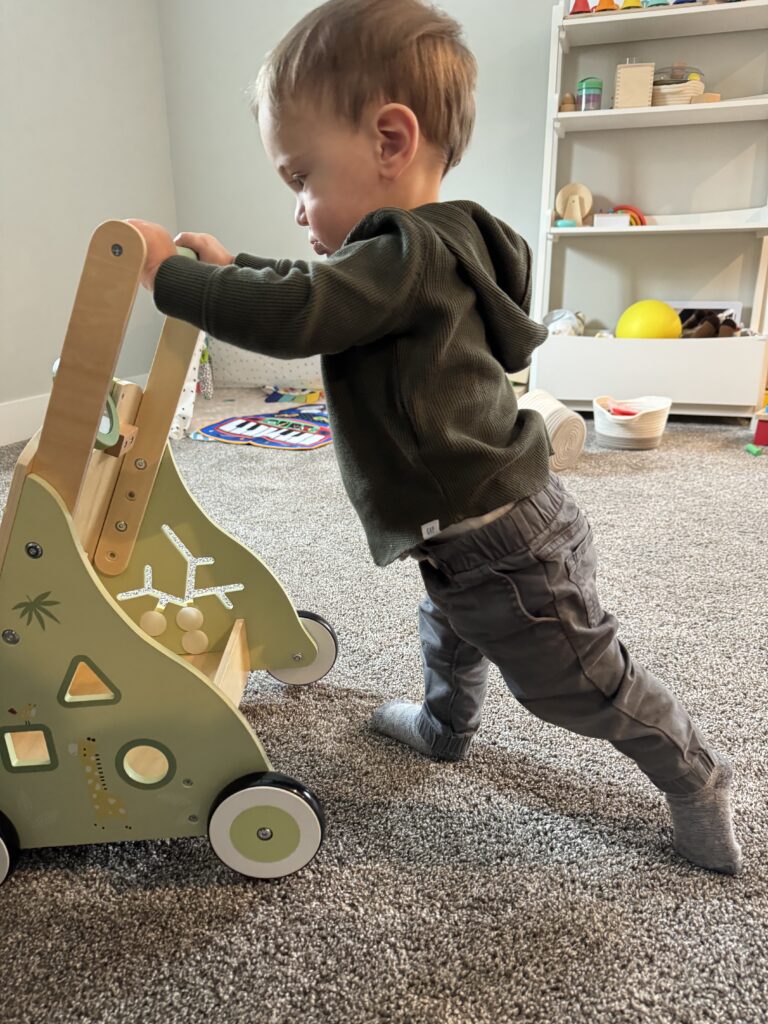
A typical 10-month-old baby is becoming more mobile every day. If they haven’t begun crawling yet, they may be showing signs that they’re ready to start, such as rocking back and forth on all fours and scooting forward on their belly with their arms. Continue to help them along until they’re ready to take those first crawling steps on their own. If you haven’t yet seen your baby do any of this pre-crawling, it may be time to ask your pediatrician for advice or a referral to a pediatric physical or occupational therapist. Early intervention is often the best practice for addressing milestone concerns!
In addition to crawling, your 10-month-old may be doing some preliminary walking: pulling themselves up to a standing position along the furniture and then cruising alongside the length of it. This is a precursor to unsupported walking, so it is an important milestone to watch out for. You’ll always want to watch out for sharp corners and edges on your furniture that may now be entering your standing baby’s trajectory. These corner protectors offer a great solution, providing temporary modifications to your home for this stage of your baby’s development.
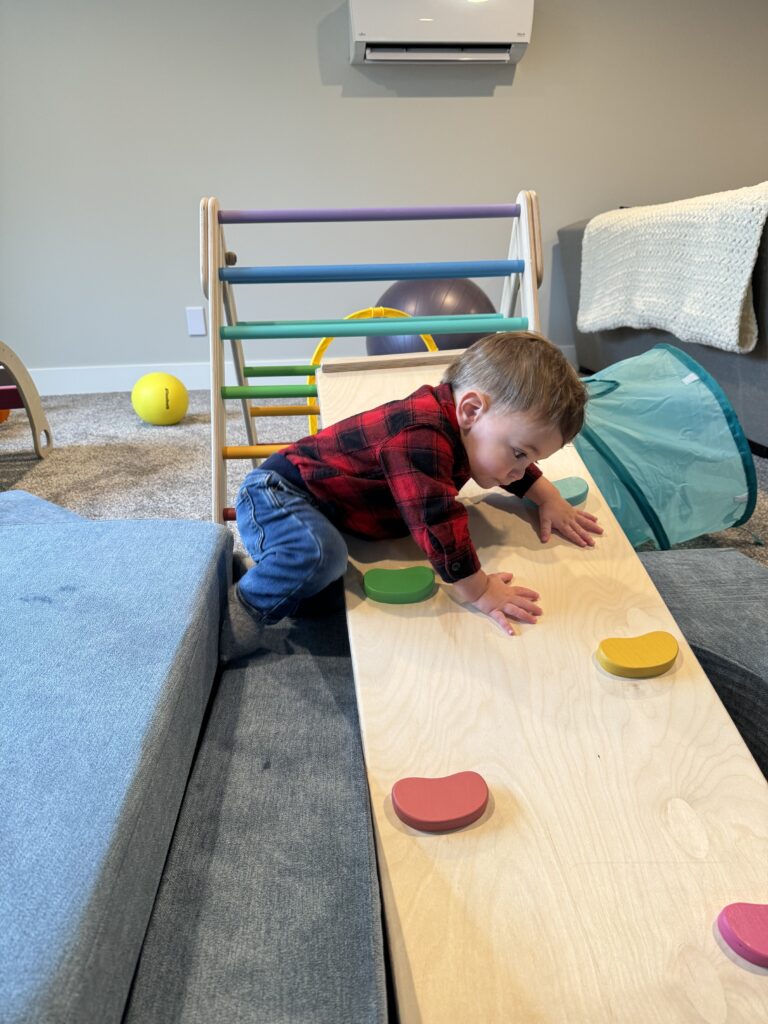
Otherwise, expect your baby to start climbing everything, from stairs to pillows/cushions and even your body! Little Jack loves climbing on his play couch as well as his climbing toys. Always exercise close supervision while your baby is climbing—slips and falls are inevitable. During this stage of your baby’s mobility, you will be testing your quick reflexes daily!
Motor Control/Strength
Besides mobility, your baby is developing strength in their legs and core that will help them stay upright for longer. You may notice them playing more often in a standing position. From here, they will soon realize how much they can reach while standing and start pulling everything down, so beware of heavy items landing on their little toes.
Another skill they will be honing is their pincer grasp, an important developmental milestone that helps them eat, play, and eventually learn to draw and color. If they haven’t already mastered this thumb-and-forefinger grasp, check out the activity guide for ways to encourage and strengthen it.
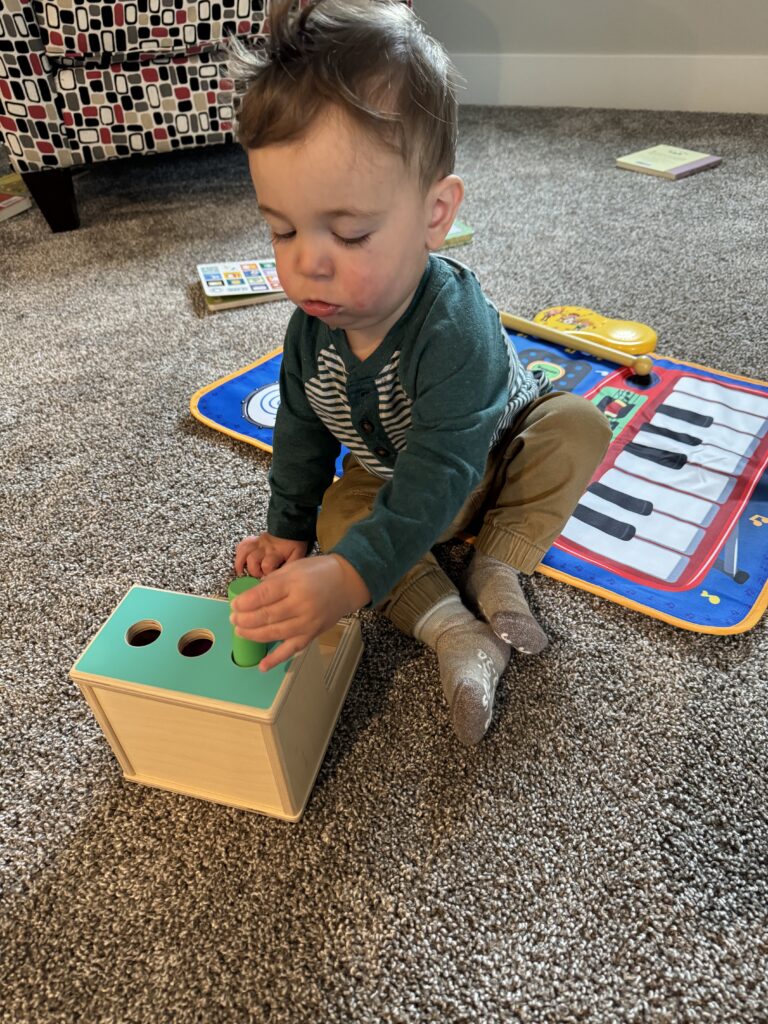
Watch for your baby to start making gestures, such as clapping, waving, pointing at objects, and giving high-fives. These skills typically develop between 9–12 months. To encourage these gestures, model them for your baby at the appropriate times. For example, wave hi and bye when arriving and leaving and help your baby wave to other people while saying “Hello” and “Bye-bye” when they arrive and leave.
Turning pages in a book is also something your baby should be working on at this age. Books with thick pages, flaps, or different textures will help keep your baby engaged rather than discouraged. Feel free to help your baby turn the pages until they get the hang of it!
Cognition/Social
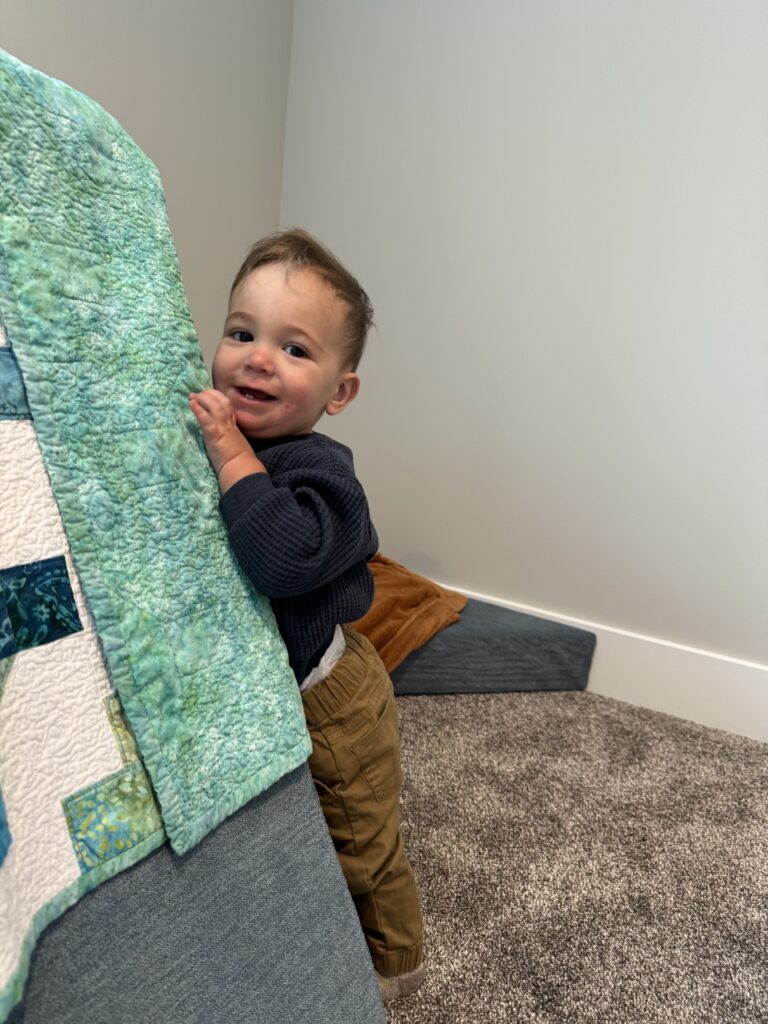
Many new cognitive and social milestones will develop as your baby nears their first birthday. Perhaps the most exciting will be their propensity for language. At this age, your baby will start understanding various words or phrases, such as “Where’s your ball?” “Do you want more milk?” and “No.” Your baby may look around for the item you mention or reach for it. As far as listening to the word “No,” don’t expect much. Little Jack sometimes listens to this word when he’s doing something he shouldn’t, but not consistently, and that’s ok!
Be sure to speak aloud to your baby often, even if they can’t answer you. Exposure to language will help them associate words with objects or actions. You can also start teaching your baby sign language. For example, when Jack and I play peek-a-boo under a blanket, I show him the sign for “Again” while repeating the word, and then I help him do the sign with his own hands. Other good starting words are “More,” “Milk,” “Eat,” and “All done.” Check out the videos on this website to learn how to sign many different words.
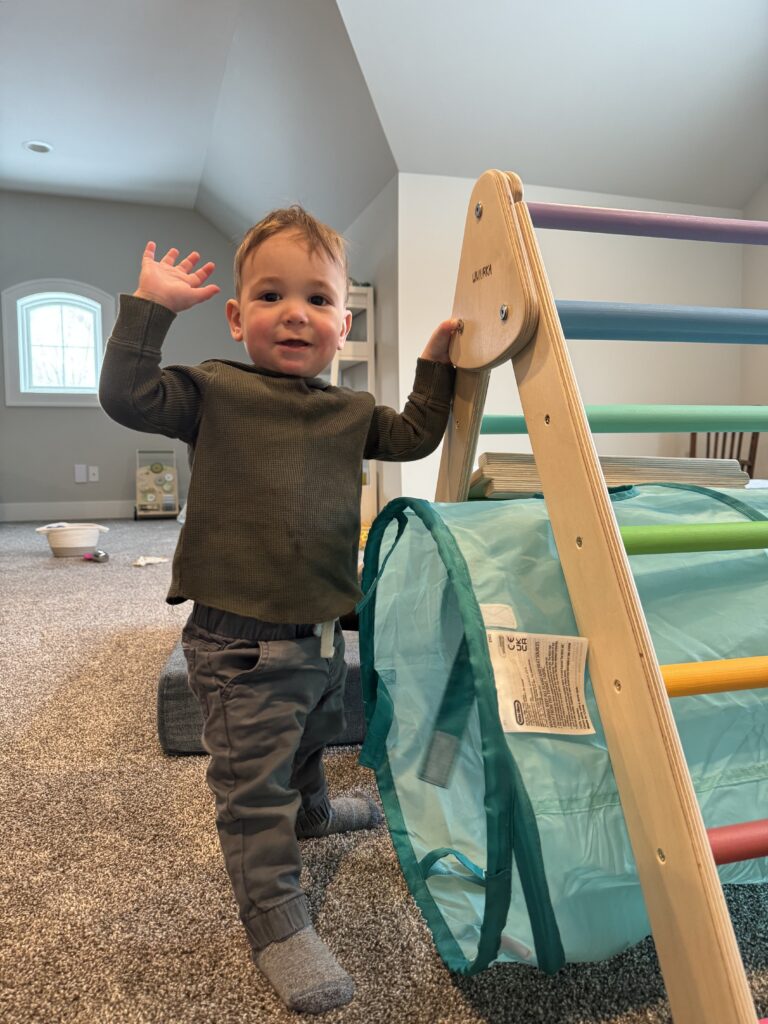
Your baby may also learn how to play simple games with you. Besides peek-a-boo and hide-and-seek, another fun game is passing a ball back and forth, either by rolling or throwing it. Your baby has likely already been throwing toys for a while, but now they should start throwing with more purpose. At this point they should be figuring out how to control their hands to release an item, whereas before the throwing was often accidental.
Separation anxiety may become a problem once again for your baby when you leave them with a sitter or daycare worker. But hopefully after a few minutes of your absence, your baby is learning to self-soothe and adjust to their caregiver.
Conclusion
You may find it hard to believe it’s been ten months! That sweet little infant you brought home from the hospital is already (or almost!) standing, waving, and responding to language. But rest assured, there are far more milestones to come. These next few months will be bittersweet as you watch your baby develop into a toddler!

